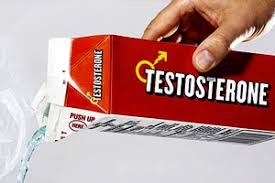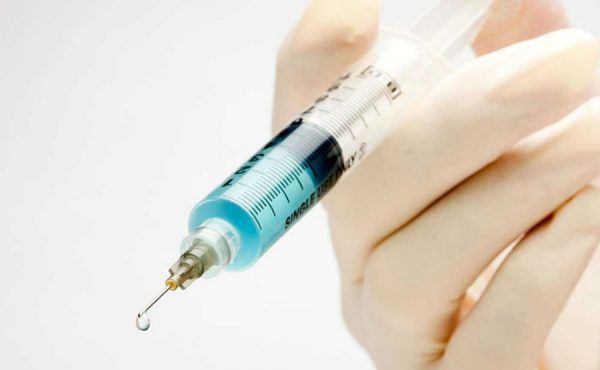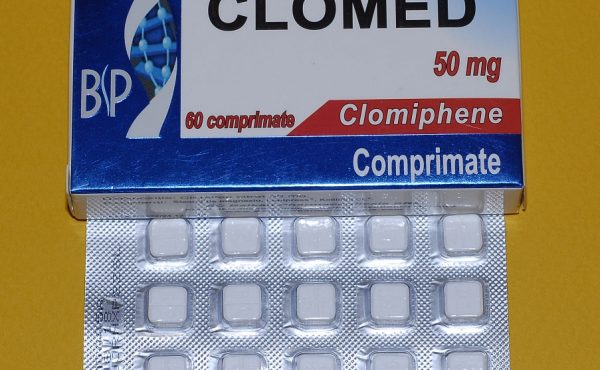Well, you’ve been on an amazing 4-month course of Sustanon and Dianabol. You scored a stunning 9 kg weight and is very happy with the result. You can not stop looking at himself in the mirror. But now you are beginning to devour the problem. You will soon be over steroids (you know that you will in any case need a break), and your testicles the size of a raisin. Your body produces less testosterone than a 9-year-old girl, and you’re trying to figure out what to do to avoid the painful post-cycle crash that could rob you of the hard-earned muscle. Opinions how to restore endogenous testosterone production after a course seems to vary wherever you look. What could be better? Without an accurate understanding of what is happening in your body, and why certain drugs to help remedy the situation, choosing the right post-cycle therapy can be quite confusing. In this article I would like to discuss the role of anti-estrogens and gonadotropin during this sensitive period of time, at the same time developing an effective strategy for their use.
Here
The axis of the hypothalamic-pituitary-testes axis, or HPTA for short, is the thermostat natural testosterone production in your body. If we consider the simplified, too much testosterone repay your oven. The lack of contrast, add heat. For the purposes of our discussion, we can imagine that the regulatory system as a system with three levels. At the top of the hypothalamus part of the brain which produces GnRH, when you want more testosterone. GnRH sends a signal level on the second axis, the pituitary, which in response generates luteinizing hormone, LH for brevity. This hormone stimulates the testes (third level) to testosterone production. Sex steroids (testosterone, estrogen) that are produced serve as a counterweight to be involved in the negative feedback, sending signals (preferably 
The fall of the sensitivity of the testicles
Although steroids suppress testosterone mainly by reducing the level of gonadotropic hormones that the main obstacle to restoration HPTA after drug withdrawal to the surprise itself is not LH. This problem became evident in a study published in Acta Endocrinologica earlier in 1975 (1). It observed blood parameters, including testosterone recovery and LH levels in men who received testosterone enanthate at 250 mg per week for 21 weeks. The subjects were followed for 18 weeks after cessation of treatment. At baseline level of LH was suppressed in direct relation to the increase in testosterone levels, which was expected. However, everything was very different when steroids were canceled (see. Fig. 1). LH levels began to rise quickly (by the third week) while testosterone barely changed quite a considerable time. In fact, on average, it has been more than 10 weeks before starting any noticeable change. This lack of communication explains that the problem is the restoration of androgen levels is not the level of LH and actually atrophy and fall of testicular sensitivity to this hormone. After a period of inactivity the testes obviously lost mass (atrophy) that made them unable to perform the amount of work required elevated levels of LH.
The level of luteinizing hormone after the course
The level of testosterone after the course
Figure 1. Measurement of LH and testosterone began after 1 week from the last injection of 250 mg testosterone enanthate (results before the treatment were 5 mU / ml and 4.5 ng / ml respectively). Note that between the 1st and 5th weeks, while testosterone is reduced due to discontinuation of exogenous testosterone, LH level has recovered. From 5 to 10 weeks testosterone level is at or very close to the lower level, although a considerable level of LH in this period. Up to the 10th week is not much significant increase in testosterone levels.
The role of anti-estrogens
It is important to understand that anti-estrogens alone do not have a big impact on the restoration of endogenous testosterone recovery after the course. Usually they only stimulate the production of LH by blocking the negative feedback of estrogen, but now we see that the level of LH and so quickly recovers without aid. On top of that after a course of no increased level of estrogen, anti-estrogens that block, as testosterone (now suppressed) is a major raw material for the synthesis of estrogens in men. As a result, the level of estrogen in the serum is actually lower, not higher. Any increase in estrogen levels after the course will take place simultaneously with the increase in testosterone levels, not before (note that after the course there is an imbalance in relation to the levels of these hormones, but it is an entirely different subject). We do not see ways antioestrogens which can really help here). However, we can see why this fact it is easy to miss. The medical literature is full of references that anti-estrogen drugs such as Clomid and Nolvadex to increase LH and testosterone recovery levels, and under normal conditions, these drugs do increase the endogenous production of hormones by blocking the negative feedback of estrogens. If you combine this with the fact that it is possible to find the same number of studies that show that steroid use lowers LH when suppressing testosterone recovery levels, you can see how easy it would be to go to the conclusion that after the course we need to focus on restoring LH. We would miss the true problem of testicular sensitivity fall, if not looked at real speed recovery hormones involved.
HCG
So now we see that, contrary to popular opinion in our time, some anti-estrogens will make a small contribution to the restoration of testosterone recovery levels in the first week post-cycle period. It forces us to pay attention to a completely different level of the HPTA, and to accelerate recovery: in the testicles. For this we need injectable gonadotropin. If you are not familiar with it, gonadotropin is a drug that mimics LH own our bodies. Although the testes are equally lost their sensitivity to the drug, as well as LH (the mechanism of their work is the same), we take it as a single drug and thus are not constrained by the limits of its own production of LH. Similarly, we can use gonadotropin for a large dose of LH (at our option), to improve the recovering LH which is already in our body. Essentially, we want to shock our body is extremely high concentrations of LH from endogenous and exogenous sources. We want to bring it to the level of much more than our body, even with the support of anti-estrogens, can produce itself. The result can be a quick recovery of the original mass and testicular functions which allow to achieve a normal level of testosterone recovery is much faster than without such auxiliary program. What we now see, it’s that the gonadotropin is really a central post-cycle drug, while anti-estrogens in the best case, are secondary drugs. We want to bring it to the level of much more than our body, even with the support of anti-estrogens, can produce itself. The result can be a quick recovery of the original mass and testicular functions which allow to achieve a normal level of testosterone is much faster than without such auxiliary program. What we now see, it’s that the gonadotropin is really a central post-cycle drug, while anti-estrogens in the best case, are secondary drugs. We want to bring it to the level of much more than our body, even with the support of anti-estrogens, can produce itself. The result can be a quick recovery of the original mass and testicular functions which allow to achieve a normal level of testosterone is much faster than without such auxiliary program. What we now see, it’s that the gonadotropin is really a central post-cycle drug, while anti-estrogens in the best case, are secondary drugs.
Completion of construction of the program
The ideal post-cycle recovery program actually aim at two things. First, it is a heavy blow to the testicles using a gonadotropin. However, it is important not to abuse this drug. If you take it too long or too high dosages receptors LH actually lose sensitivity to LH (2), which may further exacerbate our post-cycle problem instead of its decision (this is the reason that I do not like the regular use of gonadotropin-to-date). My experience with gonadotropin showed that I feel comfortable using in the course of 3 weeks in a dose of about 5000-7500IU a week. Often in the last week I limit the dose to 2500IU, if the exchange rate was not particularly long or heavy. By the time it is designed in such a way, that at least half of the total dose of the drug is taken in while the body is still there exogenous testosterone. Up our schedule is roughly equivalent to the 3rd week after the last injection of testosterone. This gives some time to restore the shape of the testicles before testosterone recovery levels reach the lower level. Second, antiestrogens are used at the same time as auxiliary agents, i.e. typically added 20mg Nolvadex or 50-100mg Clomid (my previous article in Mind and Muscle examines the difference between these substances). It is used to control the overwhelming influence of estrogen, when testosterone levels rise, as well as a potential side effect gonadotropin (it was shown that gonadotropin also increases testicular aromatase activity (3)). Although in the first couple of weeks, the effect of anti-estrogens is small, they can be really helpful when testosterone levels actually begin to rise to normal. To further stimulate the HPTA axis and continuous support to the high level LH, antiestrogens continue to be used within 2 – 3 weeks after the end of gonadotropin therapy. Approximate program, which would have been assigned in this exemplary post-cycle time period is shown below.
Exemplary post-cycle therapy:
| A week | amount |
|---|---|
| Week 3: | 5000IU gonadotropin total + Nolvadex 20mg per day |
| Week 4: | 5000IU gonadotropin total + Nolvadex 20mg per day |
| Week 5: | 2500IU gonadotropin total + Nolvadex 20mg per day |
| Week 6: | Nolvadex 20mg per day |
| Week 7: | Nolvadex 20mg per day |
| Week 8: | Nolvadex 20mg per day |
Conclusion
I hope this article will provide the required new look at the mechanisms involved in the restoration of testosterone recovery levels after the course. In fact, I hope she debunk preconceived belief in our days, as we now see, those who advocate the use of Clomid after the course is extremely moving away from the goal testosterone recovery. The problem is much deeper than just the restoration of LH levels. In fact, we see that LH does not need much help to recover and such a drug like Clomid, in any case will have a little help in the absence of significant levels of estrogen. Gonadotropin is the drug with the undeniable advantage during post-cycle period of time, and many bodybuilders too rushed to give it up.


